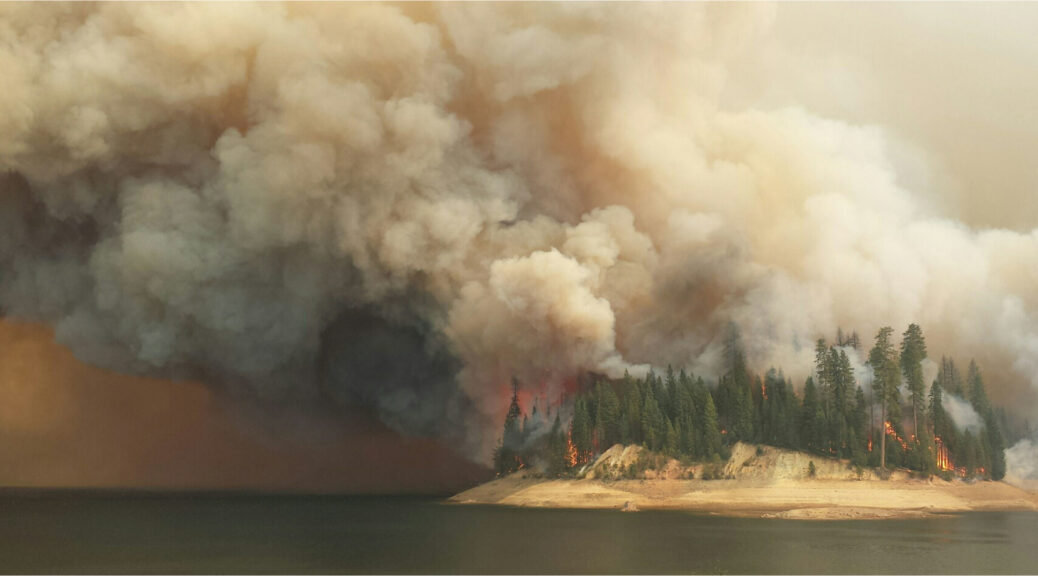A century of fire suppression has increased the density of trees in forests and, alongside climate change, created conditions for increasingly frequent catastrophic wildfires that burn out of control and produce more smoke. It has been shown that restoring forests can reduce wildfire risk, and that smoke impacts may be one of the largest health costs of wildfires
in recent years. This report explores how forest management, including the use of beneficial fire, is linked to reducing overall smoke burden on populations and resulting impacts on human health and health organizations. Making this explicit link will require significant cross-disciplinary and cross-governmental coordination, collaboration, and research. The report finds that many health organizations see the value in engaging with forest management, but they need more information on the potential benefits to people’s health and the health sector.
“We have an opportunity we shouldn’t squander to lay the foundation for greater collaboration between the health sector and governmental air and land managers,” says the study’s Steering Committee Chair Jennifer Montgomery, Retired Placer County Supervisor and Former Director of the California Governor’s Forest Management Task Force. “Steps taken now on wildfire smoke impacts will pay future dividends in our responses to, and preparation for, other natural disasters. Our shared focus should explicitly include vulnerable populations including Tribal communities, agricultural workers, pregnant people and many others.”
To understand how health sector organizations are experiencing impacts from smoke, the report authors interviewed 60 individuals representing California’s health sector, spanning public health (state, local, and Tribal government and non-governmental organizations), health systems (hospitals, clinics, and more), and health insurance companies. The interviews uncovered health sector organizations’ experiences with wildfire smoke, finding that there are real costs of wildfire smoke, often burdening rural, resource-constrained, or otherwise vulnerable communities.
“The message was clear,” says Phil Saksa, Blue Forest’s Chief Scientist. “Wildfire smoke is a growing concern for the California health sector, and they see value in engaging on the issue of forest health, but they often don’t know how or where to begin. Confronted with the staggering health impacts of short- and long-term exposure to wildfire smoke – and the fact that smoke can travel hundreds to thousands of miles into both rural and urban communities – now is the time to bring together California’s forest management community with the health sector for a healthier future for all Californians. With this report, we believe Blue Forest and CCST can help start the conversation of how to do that.”
The authors also investigated the literature to look for the very data and evidence the health sector is seeking on the potential health benefits of forest management. The report examines frameworks for estimating health impacts of wildfire smoke and for evaluating the smoke tradeoffs of healthy vs. degraded forests — including the use of beneficial fire.
“Prioritizing policies that promote forest health is not only a critical step in preventing catastrophic wildfires, but also for building healthier communities across California and the nation by reducing adverse health outcomes from smoke,” says Amber Mace, CCST CEO. “With good, intentional fire, forests are expected to produce less smoke overall, produce less smoke that gets into communities, and allow for communities to better protect their health. So in total, you could have far fewer health impacts than fires burning on the worst days, in the worst uncontrolled way, with little to no forewarning.”
Greater collaboration between forest managers and the health sector in the pursuit of resilient forests has the potential to drive progress in improving ecological and human health outcomes.
“We launched the Innovative Finance for National Forests program to support solutions-oriented projects like these,” said Nathalie Woolworth, Conservation Finance Program Manager at the US Forest Service. “Addressing wildfire risk across the West requires collaboration on many levels, and with sectors that have not traditionally been engaged. CCST and Blue Forest’s work lays a foundation for outreach to and collaboration with a key future voice in forest restoration – the health sector.”
The report, “The Human Health Benefits of Improving Forest Health in California: Investigating the Links Between Forest Management, Wildfire Smoke, and the Health Sector,” was supported with funding from the Innovative Finance for National Forests (IFNF) program, which is co-managed by the U.S. Department of Agriculture Forest Service, and U.S. Endowment for Forestry and Communities. Additional funding was applied from CCST’s Disaster Resilience Initiative, which is supported by the State of California, and from the J.M Kaplan Fund and Alumbra Innovations Foundation. The six-member Steering Committee who guided the study is chaired by Jennifer Montgomery (Retired, Former Director of the Governor’s Forest Management Task Force). The lead authors are Teresa Feo (CCST), Kim Seipp (Blue Forest), and Signe Stroming (Blue Forest).
Learn more and download the study here.
ABOUT CCST
The California Council on Science and Technology is a nonpartisan, nonprofit organization established via the California State Legislature in 1988. CCST responds to the Governor, the Legislature, and other State entities who request independent assessment of public policy issues affecting the State of California relating to science and technology. CCST engages leading experts in science and technology to advise state policymakers—ensuring that California policy is strengthened and informed by scientific knowledge, research, and innovation.
ABOUT BLUE FOREST
Blue Forest is an innovative climate finance non-profit that addresses pressing environmental challenges by developing ecological investment opportunities. As part of that work, Blue Forest works on research and development to demonstrate the environmental, economic, social, and cultural outcomes of ecosystem restoration interventions, motivates new and traditional sources of funding to implement restoration projects, and finances long-term commitments to increase the pace and scale of restoration. In partnership with the US Forest Service and the World Resources Institute, a particular area of focus is forest restoration in the western U.S. to address the catastrophic wildfire challenge.
Media Contact
Keleigh Friedrich, California Council on Science and Technology, 1 916-402-4031, [email protected], ccst.us
Jessica Alvarez, Blue Forest, 1 510-379-0560, [email protected], https://www.blueforest.org/
SOURCE California Council on Science and Technology


